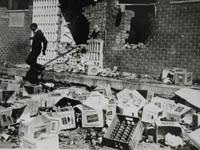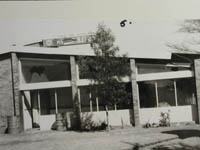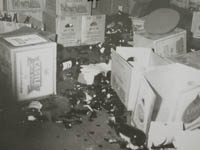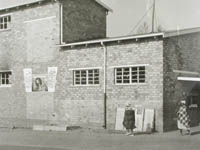Table of Contents
Acknowledgments Readers' Guide
Introduction The Narrative Official Stories The Participants Afrikaans Memory and Violence Final Thoughts Archive
Abbreviations Glossary
Gutenberg-e.org Columbia University Press
Essay
Beer Halls and Bottle Stores
There were numerous accounts of students attacking beer halls, berating those whom they found drinking there, overturning tables and
eventually ransacking the premises. All beer halls and liquor stores (except one) that belonged to the Bantu Administration Board were
destroyed. In some cases the buildings were pelted with stones. They were broken into and then looted. Young and old went into them and
carried out bottles and cartons of liquor.
 Large quantities were destroyed, although some was also taken home, hidden or drunk. In most cases the buildings were set on fire after they had been emptied. The
Soweto Students' Representative Council called for a ban on all alcohol sales and demanded that shebeens1
be closed and that there be no "drinking and celebrations of any kind whilst the whole Black community has gone into a period of mourning for
their brave sons and daughters."2 Places of "recreation," such as public beer halls and bottle stores,
were attacked because students understood that income from alcohol sales, over which the West Rand
Administration Board held the monopoly, provided the material base for the government administration of the townships.
Large quantities were destroyed, although some was also taken home, hidden or drunk. In most cases the buildings were set on fire after they had been emptied. The
Soweto Students' Representative Council called for a ban on all alcohol sales and demanded that shebeens1
be closed and that there be no "drinking and celebrations of any kind whilst the whole Black community has gone into a period of mourning for
their brave sons and daughters."2 Places of "recreation," such as public beer halls and bottle stores,
were attacked because students understood that income from alcohol sales, over which the West Rand
Administration Board held the monopoly, provided the material base for the government administration of the townships.
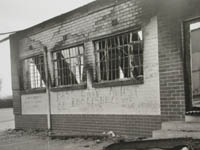 In March 1977, F. E. Marx, chief director of the East Rand Bantu Affairs Administration Board, suggested before the
Cillié Commission that the Bantu Administration Boards should no longer subsidize income rents and services from liquor sales. The West Rand
Bantu Administration Board derived 20.75 percent of its income from beer and liquor sales during the 1976-77 financial year. One hundred percent of
the beer-sale profits were used by the boards themselves, and 20 percent of liquor profits were paid over to the Department of Bantu Administration
and Development.3 The Urban Foundation estimated that the sale of liquor and beer amounted to 44 percent
of all of West Rand Administration Board's estimated revenue generated for Soweto in 1976-77. The WRAB estimated that it would have to spend 37 percent
of its 1977 budget on the reconstruction of beer halls and bottle stores destroyed in 1976.4
In March 1977, F. E. Marx, chief director of the East Rand Bantu Affairs Administration Board, suggested before the
Cillié Commission that the Bantu Administration Boards should no longer subsidize income rents and services from liquor sales. The West Rand
Bantu Administration Board derived 20.75 percent of its income from beer and liquor sales during the 1976-77 financial year. One hundred percent of
the beer-sale profits were used by the boards themselves, and 20 percent of liquor profits were paid over to the Department of Bantu Administration
and Development.3 The Urban Foundation estimated that the sale of liquor and beer amounted to 44 percent
of all of West Rand Administration Board's estimated revenue generated for Soweto in 1976-77. The WRAB estimated that it would have to spend 37 percent
of its 1977 budget on the reconstruction of beer halls and bottle stores destroyed in 1976.4
Marx argued that Administration Board officials suspected that this was the reason why beer halls and buildings had been attacked by the youth:
Ons weet nie hoekom die aanval juis op die drankpunte en op die biersale was nie maar nou probeer 'n mens die twee punte bymekaar kry en dit is die enigste rede wat ek werklik kan kry omdat dit lyk of die jeug of die jonger mense in opstand gekom het deur die misbruik van drank wat plaasgevind het.We do not know why exactly the attack was made on the drinking spots and the beer halls, but now a person tries to get the two points together and this is the only reason that I can really gather, because it looks as if the youth or the young people revolted because of the misuse of alcohol that took place.5What's this?
He argued that higher rents and tariffs would reduce the Administration Boards' dependency on profits from the sale of alcohol and that he considered it important that it "not be cast in a person's face that the black man is being asked to drink so that there is enough income to supplement the shortages."6 It was a thought that had already occurred to the students. In the press statement they issued on November 4, 1976, they rejected the WRAB's "benevolent reasons, that out of liquor sales they build schools, playgrounds and swimming pools for us." (See essay: Press as Witness) They similarly rejected pleas by the shebeen queens that they be allowed to continue to sell alcohol "because they are supporting one or two students at school with the money they get from liquor"—undoubtedly a reality, but one unacceptable to the students:7
5We appreciate their kindness and generosity, but they should remember that "The end does not justify the means."
[…]
Our daily experience and that of the whole of Soweto residents is that no good has ever come out of shebeens. Many of our fathers and brothers have been killed in or out of shebeens. Thousands have been robbed of their pay packets after drinking in shebeens. Many of our black sisters have been raped and/or murdered by drunkards and thugs from shebeens. Shebeens have in reality become houses of vice and immorality. We cannot tolerate to see our fathers' pay packets being emptied in shebeens—and many wives and children suffering, just because one or two students are benefiting from shebeen liquor sales. Hundreds of our colleagues have become delinquents, beggars or orphans as shebeen queens and kings become capitalists.8
Nina Sabela similarly wrote, in an undated notebook:
We have proof that the bottle stores and beer hall income was used to "develop" the homelands. Our people are responsible for the removal of refuse blocking our streets, also street lights leave much to be desired. Where was the 58 percent income from beer halls used?9
They also believed that the government deliberately and cynically undermined African society by providing alcohol and facilitating alcohol consumption at beer halls and liquor stores strategically placed near railway stations, where men coming home with the week's wages would likely be tempted to spend them:
One slogan … read "Less liquor, good education." The South African Government has built numerous bottle stores, beer halls and shebeens next to the stations. We believe that they are there to misdirect the black people. Most of the bottle stores are next to the stations so that when our fathers and mothers come from work, they drink and forget about their surroundings.1010
Marx did not have a particularly high regard for the youth of the urban townships, alleging before the Cillié Commission, as did so many of the administration's spokesmen, that the tsotsi element would have been responsible for much of the "gruweldade, brandstigting, klipgooiery, diefstal, rowery en grootskaalse dronkenskap" (atrocities, arson, theft, robbery, and large-scale drunkenness).11
He did not, however, go as far as some police officials did in insinuating that alcohol had been deliberately used to urge children on and to suppress their fears:
Dit is … veelseggend dat die drankwinkels een van die eerste teikens van plundering was. Daar was 'n buitengewone groot vooraad drank en dit was alles weggedra. Nie baie lank hierna nie was die biersale aan die beurt, met dieselfde gevolge. Kort hierna was die gevolge van 'n te groot maat alkohol duidelik waarneembaar in die gedrag van die skares. Dit was net so duidelik dat daar doelbewus by hierdie plekke ingebreek was om die drank te bekom ten einde hulle (en ek verwys na wie ek bedoel, dit is die kinders) vrees vir die polisie te onderdruk en hulle gewete te sus vir die gruweldade wat in werklikheid daarna gevolg het. Dit was geen uitsondering om kinders van tot so jonk as ses jaar dronk te sien nie en kinders met bottels drank was oral in die strate te sien.It is … significant that the bottle stores were one of the first targets of looting. There was an unusually large supply of alcohol and it was all carried away. Not long afterward it was the turn of the beer halls, with the same consequence. Shortly thereafter the consequence of a too large amount of alcohol was clearly noticeable in the behavior of the crowds. It was just as clear that they broke into these places deliberately to get the alcohol for the purpose of suppressing their (and I refer to whom I mean—that is, the children) fear for the police and to assuage their conscience for the atrocities that then really followed. It was no exception to see children as young as 6 years drunk, and children with bottles of alcohol were seen everywhere in the streets.12What's this?
Colonel Slabbert said he spoke from experience.
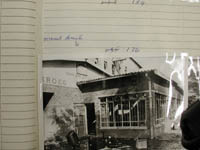 Since it could be assumed that the alcohol that had been stolen lasted only till the evening of June 19, he argued, it was "voor-die-hand-liggend"
(obvious) why the intensity of the uprising subsided then. Using the first break in the uprising as evidence, he argued that from there on it was the
tsotsi element that had been largely responsible for continued "crime." He also credited the "doelgerigte optrede—polisie optrede"
(decisive action—police action) and the "selektiewe geweer vuur" (selective rifle fire) for quelling, in his view, the enthusiasm among
the youth so quickly after the "uitbreek" (eruption) of "onluste" (disturbances).13
Since it could be assumed that the alcohol that had been stolen lasted only till the evening of June 19, he argued, it was "voor-die-hand-liggend"
(obvious) why the intensity of the uprising subsided then. Using the first break in the uprising as evidence, he argued that from there on it was the
tsotsi element that had been largely responsible for continued "crime." He also credited the "doelgerigte optrede—polisie optrede"
(decisive action—police action) and the "selektiewe geweer vuur" (selective rifle fire) for quelling, in his view, the enthusiasm among
the youth so quickly after the "uitbreek" (eruption) of "onluste" (disturbances).13
The attacks on such structures illustrated how the changing composition of the crowds changed the motivation for attacks. As older and less politically motivated groups joined in the protests, they attacked some of these facilities for personal gain, looting alcohol and at times consuming it. Although it was difficult to establish how much stolen alcohol was consumed and how much destroyed, the government, seeking to diminish the student movement and change the meaning of the attacks on beer halls and liquor stores, advanced the view that the attacks were aimed at the theft of the alcohol and that the students were therefore not only delinquent but criminal. In some "areas of rioting," Cillié wrote:
15Liquor was so extensively abused that it may well have had an effect on the riots. In the first place, mention must be made of a disturbing phenomenon that had no noticeable effect on the riots. At more that one place, young children aged from six to 12 years were seen under the influence of liquor. Some of them had looted liquor outlets, from which they had run with bottles to their mouths. In a number of cases, some of them were found in a stupor. In the Highveld region [which included Soweto] and in the Peninsula, a large proportion of the rioters who were arrested were under the influence of liquor. In Nyanga [Cape], the problem was not so much that liquor was being abused as that the Comrades were taking liquor away from people in the streets; sometimes this liquor was destroyed, but at other times it was also consumed. [Emphasis added.]14
Medical examiners and coroners conducted tests for blood alcohol levels in all autopsies done on people who had been killed during the
uprising.
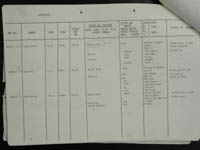 In the Cillié Report these results were carefully noted, together with a detailed description of the fatal injury, under the heading "medical
jurisprudence particulars" in an appendix wherein all victims were listed by name, race, sex and age, cause and place of death, and other factual
details, which in some cases included who had been responsible for the death. The percentages of victims of the uprising who had some alcohol in
their blood were carefully tabulated:
In the Cillié Report these results were carefully noted, together with a detailed description of the fatal injury, under the heading "medical
jurisprudence particulars" in an appendix wherein all victims were listed by name, race, sex and age, cause and place of death, and other factual
details, which in some cases included who had been responsible for the death. The percentages of victims of the uprising who had some alcohol in
their blood were carefully tabulated:
| Region |
% of victims with alcohol in blood |
|
| Boland | 14 | |
| Northern Transvaal | 41 | |
| Eastern Province | 3 | |
| Soweto | 15 | |
| Western Province | 28 | |
| Witwatersrand | 43 | |
| Total for the whole country | 20 | |
| Source: South Africa, Report of the Commission of Inquiry into the Riots at Soweto and Elsewhere from the 16th of June to the 28th of February (Pretoria: Government Printer, 1980), 2:495. | ||
"No reliable conclusion" about the consumption of alcohol and about its effects on the uprising could be drawn from these figures, Cillié concluded. There was also "not sufficient evidence" for a finding that "liquor was used by an agitator as a means of incitement." Even after listening to such damning allegations as those of Colonel Slabbert and others like him, Cillié decided that "liquor was not a cause of the outbreak or continuation of the riots, except in so far as it aggravated the violence of and prolonged certain incidents."15
Meaning was contested not simply on either side of the racial-power divide. It was also contested internally, especially among township residents, according to the divisions and differences among black people in general and among the participants in the uprising themselves. Credo Mutwa recounted to the Cillié Commission the story of the following encounter:
20[A] badly frightened schoolboy jumped aboard our trailer, a boy from the Morris Isaacson School judging by his uniforms, and we saw to our surprise that the boy was drunk. He smelt of liquor. Very much so. He was so drunk, he was incoherent and he was not the only one; there were others who were staggering drunk all along the place and this one said that certain brothers, that is big men, ouboet in Soweto, had given them liquor, but there is also another side to this thing. It was at this time they had already looted a huge beer truck which they had burned on the side of the street. He smelt of liquor and when I asked him why he was drunk, he told me that certain brothers (which is a Soweto slang for adult men) had given the marching scholars liquor earlier in the day and also that some scholars had also stolen liquor from some vehicle. Before we could question the boy further, one of the helicopters dropped some kind of gas canister not far from our tractor, nearly causing it to crash as the driver, blinded by the gas and badly scared, swerved off the road onto a football field. The schoolboy jumped off the trailer.16
In addition, meaning changed over time, as the uprising and its organizers shifted focus, changed composition, adapted to police repression, and responded to the changing demands of the demonstration-turned-protest movement. Some younger witnesses told the Cillié Commission that the students had destroyed the beer halls and bottle stores to prevent parents from squandering money on alcohol, although Cillié found this reason to be "far too pious." As for explanations that the older generation used alcohol to forget the environment of the townships and that expenditure on liquor impoverished the community, Cillié found them "not particularly convincing." Although listing government control and exploitation as "incidental" causes for the attacks on the liquor outlets, Cillié, nonetheless acknowledged "the procurement of free liquor, vandalism, and the fact that the liquor outlets belonged to the Government and that to many they were symbols of the system of government against which they were revolting" as significant.17 (See supplement: South African National Council on Alcoholism.)
Notes:
Note 1: Shebeens are illegal establishments in which formerly illicit home-brewed beer was sold, or other liquor is sold illegally without a license. They are usually run by women, often known as shebeen queens. Since 1981 many shebeens have been licensed as taverns. Pauline Morris, Soweto: A Review of Existing Conditions and Some Guidelines for Change (Johannesburg: Urban Foundation, 1980), 116, and Branford and Branford, A Dictionary of South African English, 4th ed., s.v. shebeen. back
Note 2: Soweto Students' Representative Council Press (SSRC), statement, 4 November 1976, SAB K345, vol. 198. See also South African Institute of Race Relations, Survey of Race Relations in South Africa: 1977 (Johannesburg: SAIRR, 1978), 191. back
Note 3: SAIRR, Survey 1977, 395-96. back
Note 4: Morris, Soweto, 73-74. back
Note 5: F. E. Marx (chief director, East Rand Bantu Affairs Administration Board), testimony, 2 March 1977, SAB K345, vol. 150, file 2/3, part 23, Commission Testimony vol. 123, p. 5964. back
Note 6: F. E. Marx (chief director, East Rand Bantu Affairs Administration Board), testimony, 2 March 1977, SAB K345, vol. 150, file 2/3, part 23, Commission Testimony vol. 123, p. 5964: "dat dit nie voor iemand se kop gegooi kan word dat die Swartman word gevra om te drink sodat daar genoeg fondse is om die tekorte aan te vul." back
Note 7: Soweto Students' Representative Council Press (SSRC), statement, 4 November 1976, evidence, SAB K345, vol. 198. back
Note 8: Soweto Students' Representative Council Press (SSRC), statement, 4 November 1976, SAB K345, vol. 198. See also SAIRR, Survey 1976, 191. back
Note 9: Nina Sabela, handwritten notes for the SSRC, undated 1977, evidence confiscated by the South African Police, SAB WLD (civil case) 6857/77, West Rand Bantu Administration v. Santam (WRAB v. Santam), vol. 436. back
Note 10: Tebello Motapanyane, "How June 16 Demo was Planned," Sechaba: Official Organ of the African National Congress South Africa, 11, no. 2 (1977): 58. back
Note 11: F. E. Marx, SAB K345, vol. 150, file 2/3, part 23, Commission Testimony vol. 123. Marx commented that Administration Boards really had no idea how large the contingent of such "idlers," or tsotsis, might have been among the youth of Soweto. Parental authority had sunk very low, he said, which was not surprising given that in the majority of families both parents worked and left the township at 6 A.M. "Herhaal hierdie situasie dan oor die 70,000 gesinne aan die Oos-Rand vir 'n tydperk van 10 jaar tot 20 jaar en die eindresultaat kan dan nie anders as 'n tsotsi-probleem wees nie" (Repeat this situation for all of the 70,000 families of the East Rand for a time period [age group] from 10 years to 20 years and the end result can be nothing other than a tsotsi problem). Although Marx spoke specifically about the East Rand townships of Tembisa, Katlehong, Tokoza, Daveyton, Vosloorus, Kwa-Thema, Tsakane, Duduza, Ratanda, and Devon, his comments undoubtedly apply to the West Rand townships also. back
Note 12: Gert Slabbert, (colonel, South African Police, specialist for "skare beheer, onluste, stedelike terrorisme en teen-insurgensie van terroriste" [crowd control, riots, urban terrorism, and counterinsurgency to terrorists]), testimony, 17 September 1976, SAB K345, vol. 140, file 2/3, part 3, Commission Testimony vol. 15. back
Note 13: Ibid. back
Note 14: South Africa, Report of the Commission of Inquiry into the Riots at Soweto and Elsewhere from the 16th of June 1976 to the 28th of February 1977 [hereafter cited as Cillié Report] (Pretoria: Government Printer, 1980), 1:495. back
Note 15: Ibid., 1:151, 495-96. back
Note 16: Vusamazulu Credo Pumelelo Mutwa, testimony, 22 September 1976. SAB K345, vol. 11. back
Note 17: Cillié Report, 1:497. back
